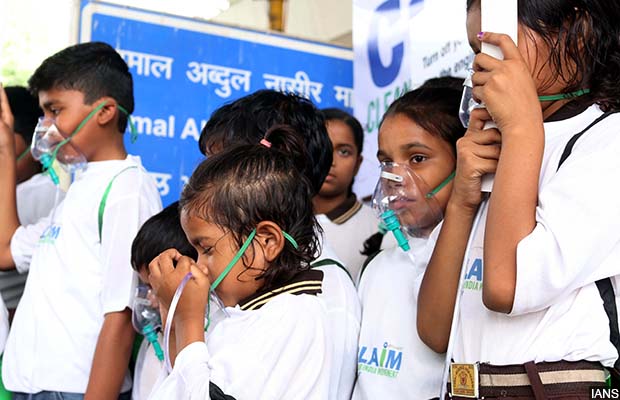New Delhi: In New Delhi, India’s capital and its most polluted city, eight of every 10 children and youth below 20 years of age living in areas with constantly polluted air have poor lung capacity, according to a study by Hazards Center, a Delhi-based advocacy.
These findings come at a time when data on the health effects of air pollution are being denied by the ruling Bharatiya Janata Party (BJP) government. There were no conclusive data to establish a direct or exclusive correlation between death/disease and air pollution, said Mahesh Sharma, minister of state for environment, in a response to the Rajya Sabha (upper house of Parliament) on February 5, 2018.
Particulate matter pollution monitored over 15 locations across the capital this winter–between October 10, 2017 and January 10, 2018–along with the peak flow tests conducted on 343 children and youth under 20 living in 11 out of 15 monitored locations revealed that 80% of the sample population had unhealthy or below-normal lung functioning.
Peak flow tests are a simple way to measure lung strength by assessing how fast one can blow air out. Normal values for a paediatric sample of children in the European Union were taken as a base for the test.
That Delhi’s youth do not measure up to a European normal can partly be “due to the demographic differences between the European Union and India, but one would not expect such a large difference in the city with the highest per capita income in the nation”, said the study.
Air quality data from the areas included in the study reveal a base pollution load of about 200 µg/m3 for PM 2.5 and 300 µg/m3 for PM 10, almost three times the national standard.
This pollution can be traced only to sources within Delhi, such as transport and construction, the report said.
Rising air pollution in a metropolis such as Delhi–and even small cities like Ranchi–is leading to rising incidences of chronic obstructive pulmonary disease (COPD) in the population, IndiaSpend reported on January 3, 2018.
As many as 27% of deaths in India were caused due to pollution, making it the country with the highest number of pollution-related deaths, followed by China, according to a Lancet study. Low- and middle-income groups are the worst affected by pollution; 92% of deaths due to pollution occurred in that income group, IndiaSpend reported on November 14, 2017.
New plans every winter, but no implementation
Road and construction dust, power plants and other industries–along with domestic cooking–are the biggest contributors (60%) to the rise in particulate pollution in Delhi’s air. The rest can be traced to vehicular pollution, according to a 2015 study by Indian Institute of Technology, Kanpur.
To deal with this, Delhi has been given a Graded Response Action Plan (GRAP), the only city-specific pollution control action plan in India. It entails a number of actions to be taken as soon as the city’s air quality plunges. These include putting a stop on garbage burning, not allowing trucks to enter the city, shutting down power plants, and closing brick kilns and stone crushers, IndiaSpend reported on December 22, 2017.
“The Graded Response Action Plan formulated hasn’t been put to use fully since its inception. Multiple organisations and bodies across Delhi seem to be advocating for new plans every winter instead of implementing what’s been put in place to mitigate the problem,” the report said.
(Tripathi is a principal correspondent with IndiaSpend.)
Courtesy: India Spend

